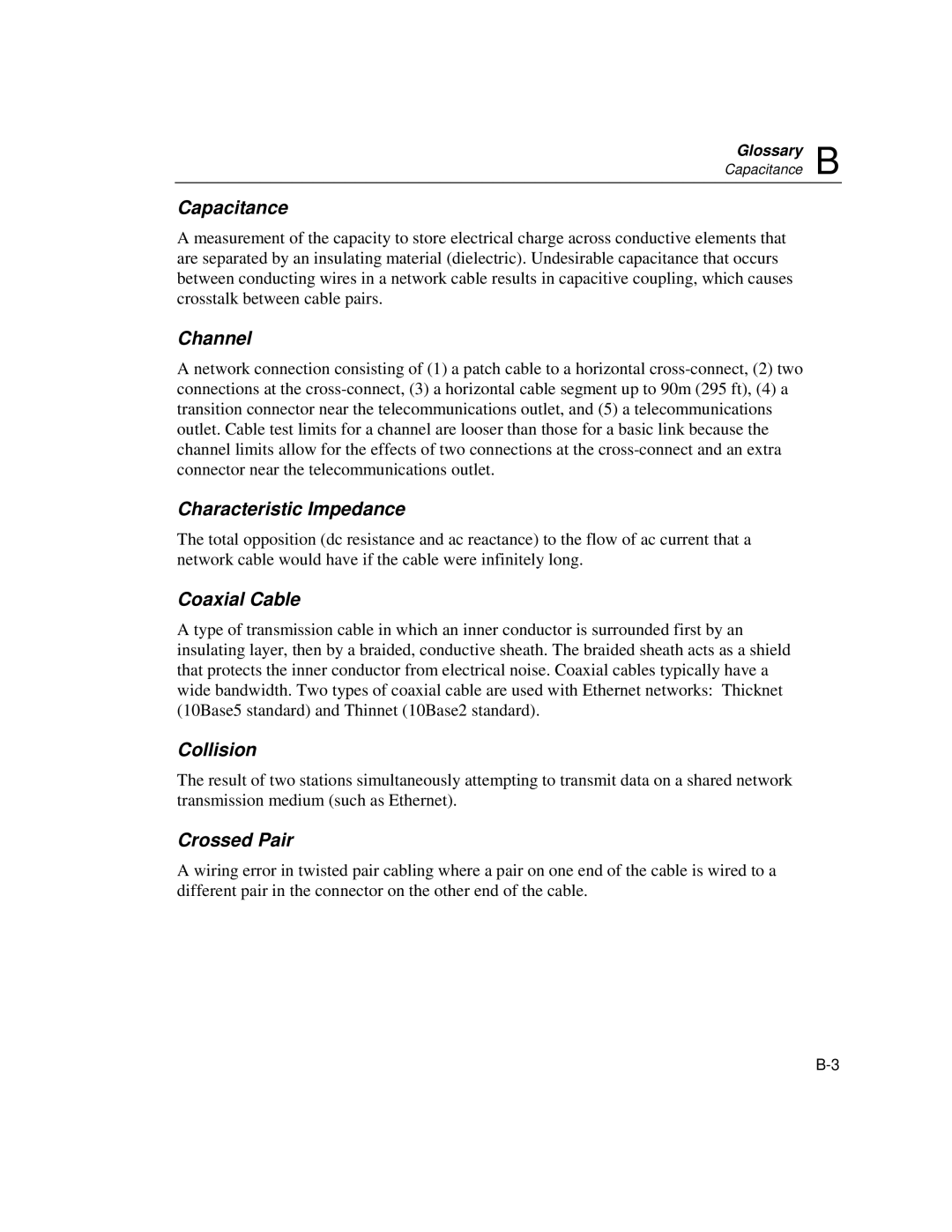Glossary
Capacitance B
Capacitance
A measurement of the capacity to store electrical charge across conductive elements that are separated by an insulating material (dielectric). Undesirable capacitance that occurs between conducting wires in a network cable results in capacitive coupling, which causes crosstalk between cable pairs.
Channel
A network connection consisting of (1) a patch cable to a horizontal
Characteristic Impedance
The total opposition (dc resistance and ac reactance) to the flow of ac current that a network cable would have if the cable were infinitely long.
Coaxial Cable
A type of transmission cable in which an inner conductor is surrounded first by an insulating layer, then by a braided, conductive sheath. The braided sheath acts as a shield that protects the inner conductor from electrical noise. Coaxial cables typically have a wide bandwidth. Two types of coaxial cable are used with Ethernet networks: Thicknet (10Base5 standard) and Thinnet (10Base2 standard).
Collision
The result of two stations simultaneously attempting to transmit data on a shared network transmission medium (such as Ethernet).
Crossed Pair
A wiring error in twisted pair cabling where a pair on one end of the cable is wired to a different pair in the connector on the other end of the cable.
